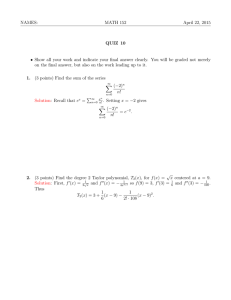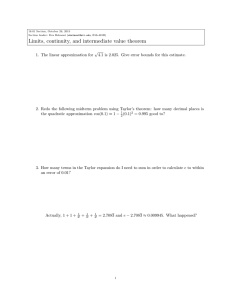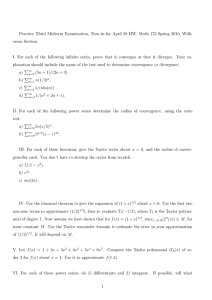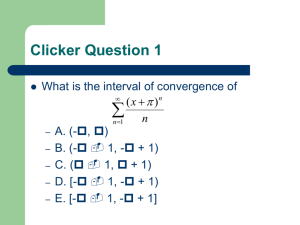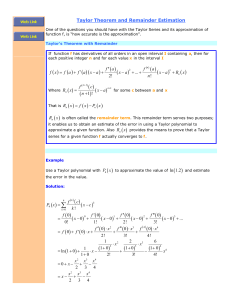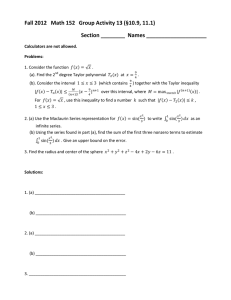More Taylor approximation error terms
advertisement
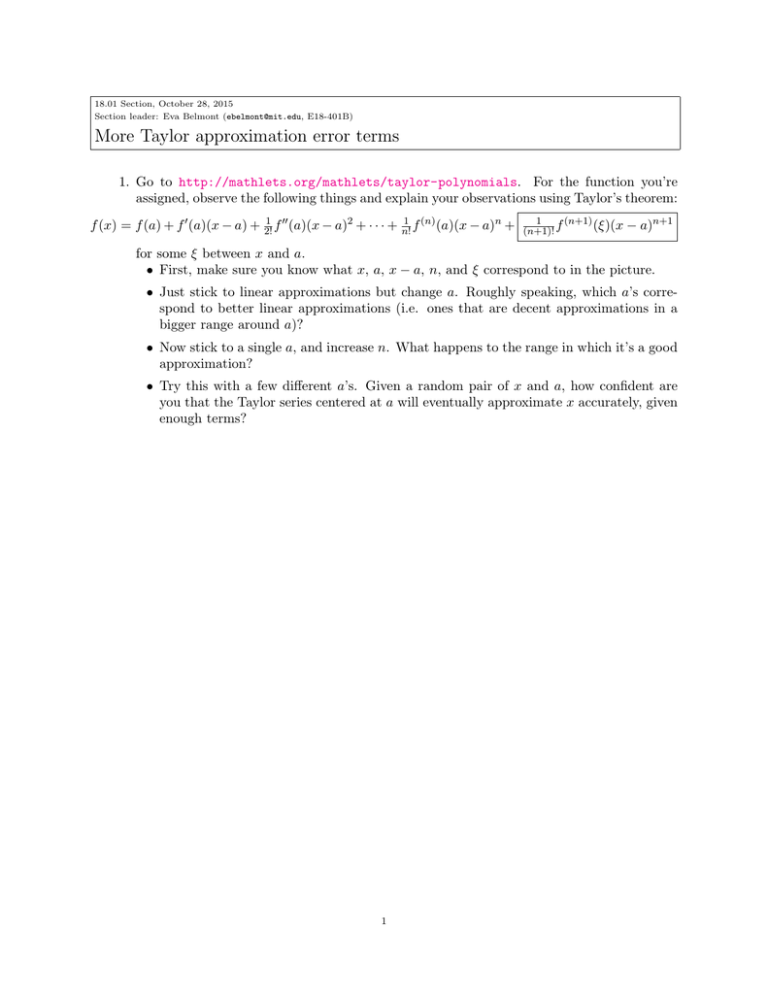
18.01 Section, October 28, 2015 Section leader: Eva Belmont (ebelmont@mit.edu, E18-401B) . More Taylor approximation error terms 1. Go to http://mathlets.org/mathlets/taylor-polynomials. For the function you’re assigned, observe the following things and explain your observations using Taylor’s theorem: 1 (n) f (x) = f (a) + f 0 (a)(x − a) + 2!1 f 00 (a)(x − a)2 + · · · + n! f (a)(x − a)n + (n+1) 1 (ξ)(x (n+1)! f − a)n+1 for some ξ between x and a. • First, make sure you know what x, a, x − a, n, and ξ correspond to in the picture. • Just stick to linear approximations but change a. Roughly speaking, which a’s correspond to better linear approximations (i.e. ones that are decent approximations in a bigger range around a)? • Now stick to a single a, and increase n. What happens to the range in which it’s a good approximation? • Try this with a few different a’s. Given a random pair of x and a, how confident are you that the Taylor series centered at a will eventually approximate x accurately, given enough terms? 1 2. Someone told you that eπ − π = 20. Actually, it’s 19.99909999. . . . It’s taking too long to calculate this using the Taylor series centered at 0, so you calculate this using the Taylor series centered at ln 23. Using the fact that |π − ln(23)| < 0.01, how many terms of the series do you need to calculate before you’re sure it’s not 20? Problem inspired by xkcd #217. 3. Suppose that f 0 (x) > 0 on some interval. Use the Mean Value Theorem to show that f (x) is strictly increasing on that interval. 2
